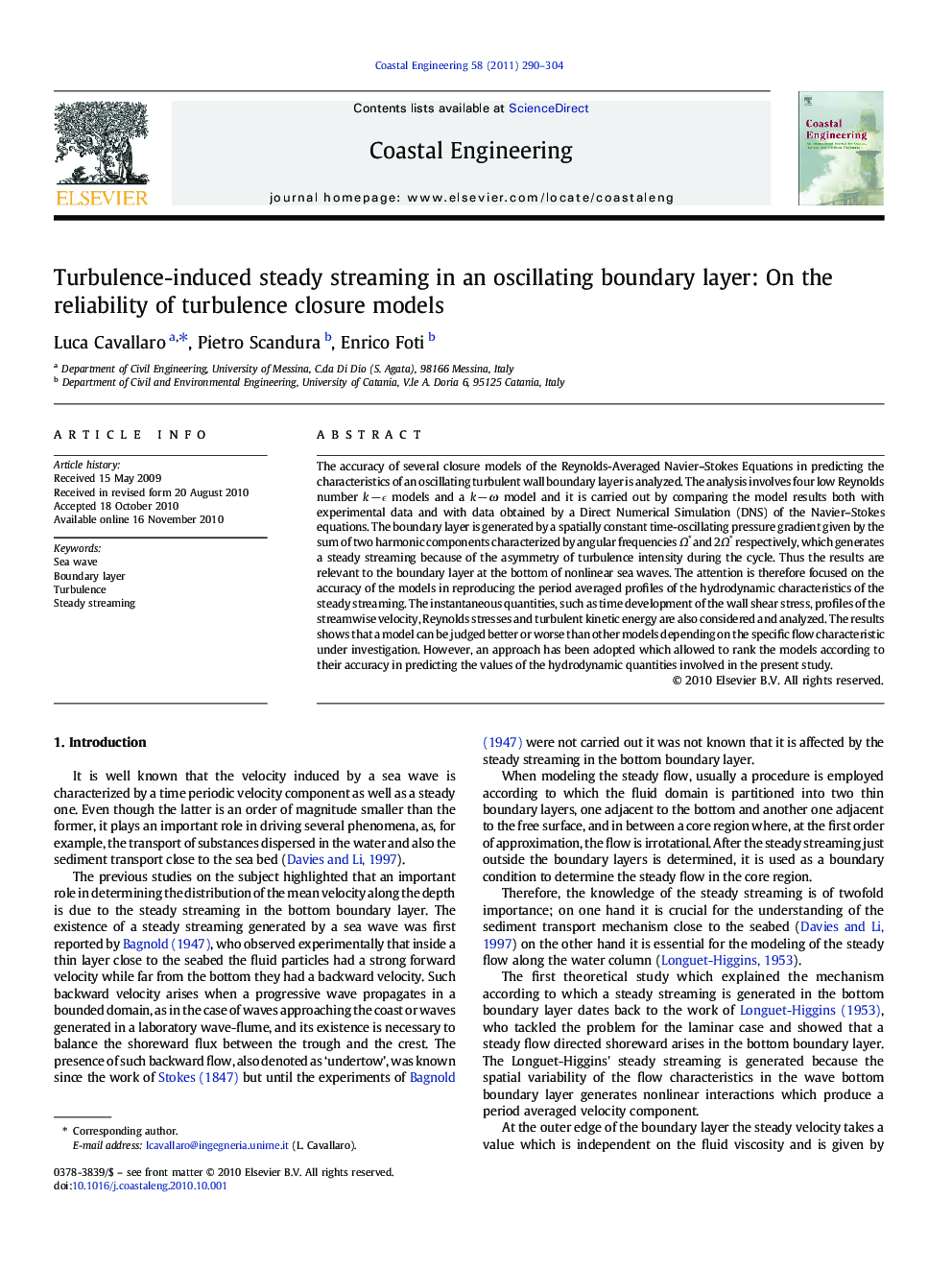| Article ID | Journal | Published Year | Pages | File Type |
|---|---|---|---|---|
| 1721069 | Coastal Engineering | 2011 | 15 Pages |
The accuracy of several closure models of the Reynolds-Averaged Navier–Stokes Equations in predicting the characteristics of an oscillating turbulent wall boundary layer is analyzed. The analysis involves four low Reynolds number k − ε models and a k − ω model and it is carried out by comparing the model results both with experimental data and with data obtained by a Direct Numerical Simulation (DNS) of the Navier–Stokes equations. The boundary layer is generated by a spatially constant time-oscillating pressure gradient given by the sum of two harmonic components characterized by angular frequencies Ω∗ and 2Ω∗ respectively, which generates a steady streaming because of the asymmetry of turbulence intensity during the cycle. Thus the results are relevant to the boundary layer at the bottom of nonlinear sea waves. The attention is therefore focused on the accuracy of the models in reproducing the period averaged profiles of the hydrodynamic characteristics of the steady streaming. The instantaneous quantities, such as time development of the wall shear stress, profiles of the streamwise velocity, Reynolds stresses and turbulent kinetic energy are also considered and analyzed. The results shows that a model can be judged better or worse than other models depending on the specific flow characteristic under investigation. However, an approach has been adopted which allowed to rank the models according to their accuracy in predicting the values of the hydrodynamic quantities involved in the present study.
